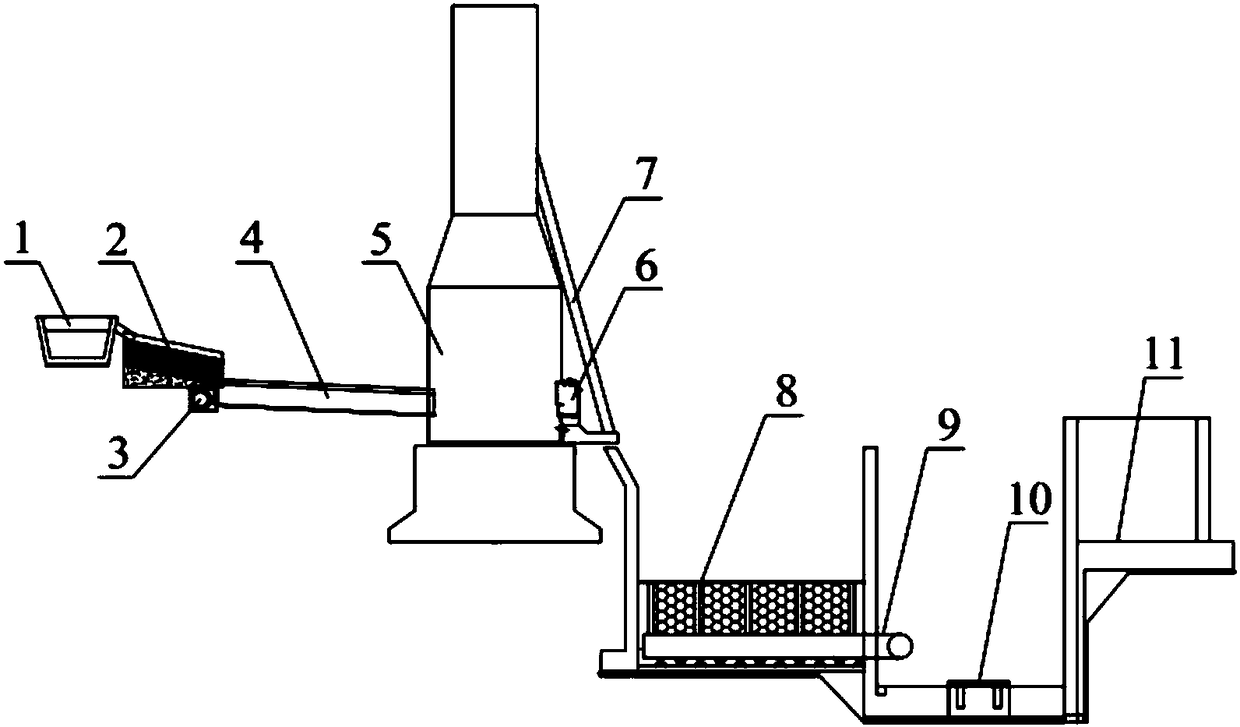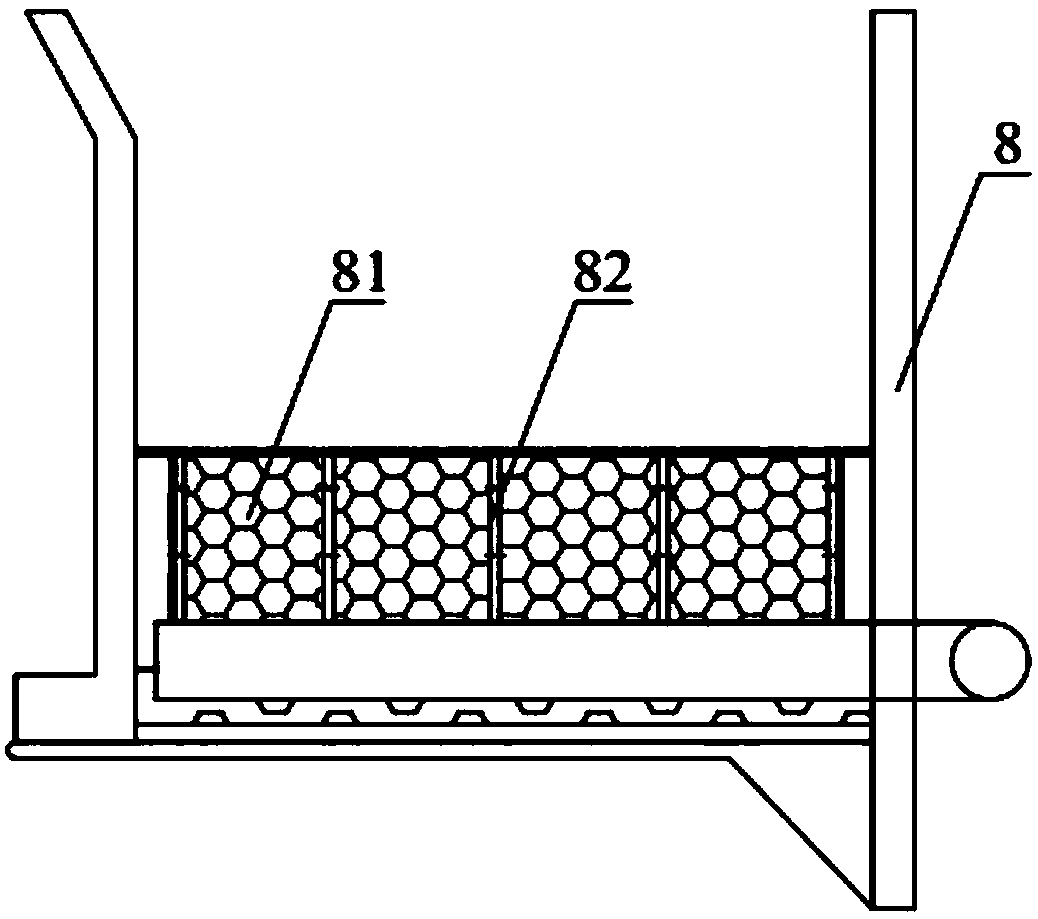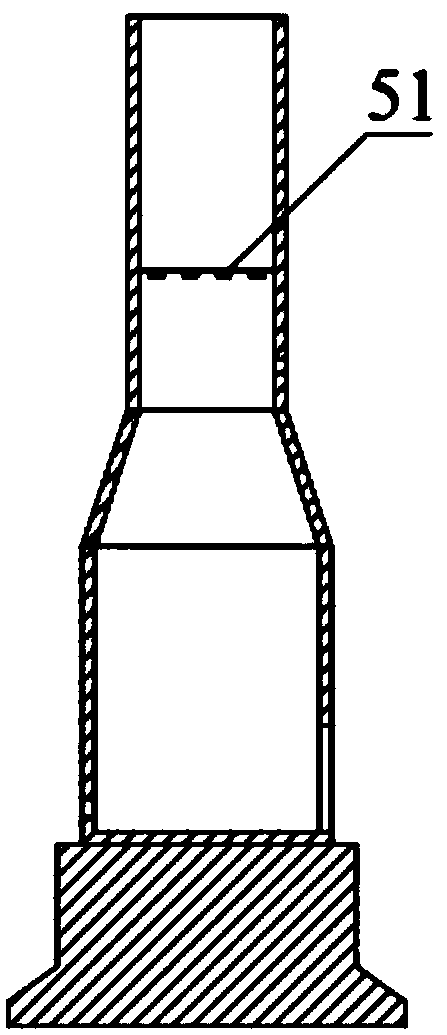Bottom-filtration-process slag treatment method for ferroalloy submerged arc furnace
A submerged arc furnace slag and ferroalloy technology, which is applied in the field of ferroalloy submerged arc furnaces, can solve the problems of high water content in slag, poor quality of water slag, and high transportation cost, so as to reduce the water content, reduce the water content and improve the quality of water slag. Effect
- Summary
- Abstract
- Description
- Claims
- Application Information
AI Technical Summary
Problems solved by technology
Method used
Image
Examples
Embodiment 1
[0040] This embodiment provides a ferroalloy submerged arc furnace bottom filtration method slag treatment method, comprising the following steps:
[0041] 1. Overflow: After the ferroalloy submerged arc furnace slag is separated from the slag and iron in the molten iron, the slag overflows into the slag ditch 2 through the slag tank 1;
[0042] 2. Crushing: when the molten slag in the slag ditch 2 flows into the water slag ditch 4, it is broken by the high-speed water flow ejected from the punching box 3, water-quenched and granulated to obtain a slag-water mixture;
[0043] 3. Cooling: the slag-water mixture flows into the buffer tower 5 through the water slag ditch 4 to continue cooling;
[0044] 4. Filtration: The slag-water mixture in the buffer tower 5 directly flows into the filter tank 8 through the buffer tower outlet device 6 for filtration.
[0045] In the traditional ferroalloy submerged arc furnace production process, the ferroalloy slag is usually treated by the...
Embodiment 2
[0048]This embodiment is further improved on the basis of embodiment 1. The hydraulic pressure range of the punching tank 3 during slag flushing is 0.20-0.25 MPa. The water pressure during blast furnace slag punching is generally 0.12-0.15 MPa, but ferroalloy submerged arc slag has a higher viscosity and higher temperature than blast furnace slag, so it is necessary to re-determine the appropriate water pressure range. After many tests and adjustments, the water pressure of 0.20-0.25MPa is the most suitable pressure range. When using 0.19MPa hydraulic pressure to flush slag, the ferroalloy slag cannot be fully broken and cannot be cooled rapidly. When using 0.26MPa hydraulic pressure When flushing slag, slag wool begins to be produced, which is easy to block the filter tank 8. Use 0.20-0.25MPa hydraulic pressure to flush slag, especially when the water pressure is 0.23MPa, the effect of crushing and granulating slag is the best, and the amount of slag wool produced Also the sm...
Embodiment 3
[0050] This embodiment is further improved on the basis of Example 2. The slope of the water slag ditch 4 is not less than 6%, and the slope less than 6% is not conducive to the forward movement of the water slag mixture. In practical applications, a slope of 5 is used. When using the slag ditch with a slope of 7%, it will be used for about 40 days. Due to the increase of sediment at the bottom of the slag ditch, the liquid level in the ditch will be raised, and the slag ditch will be piled up gradually. When using a slag ditch with a slope of 7%, use In 90 days, there was no heaping phenomenon in the slag ditch. At the same time, in order to ensure that the steam generated during the slag flushing process does not overflow in large quantities, and that the slag-water mixture does not splash randomly during slag flushing, a cover plate is arranged above the water slag ditch 4 .
PUM
| Property | Measurement | Unit |
|---|---|---|
| thickness | aaaaa | aaaaa |
Abstract
Description
Claims
Application Information
 Login to View More
Login to View More - Generate Ideas
- Intellectual Property
- Life Sciences
- Materials
- Tech Scout
- Unparalleled Data Quality
- Higher Quality Content
- 60% Fewer Hallucinations
Browse by: Latest US Patents, China's latest patents, Technical Efficacy Thesaurus, Application Domain, Technology Topic, Popular Technical Reports.
© 2025 PatSnap. All rights reserved.Legal|Privacy policy|Modern Slavery Act Transparency Statement|Sitemap|About US| Contact US: help@patsnap.com



